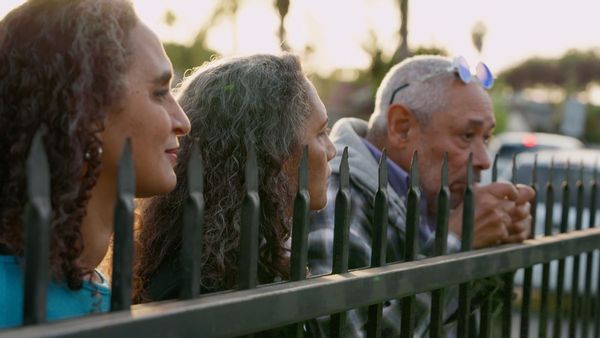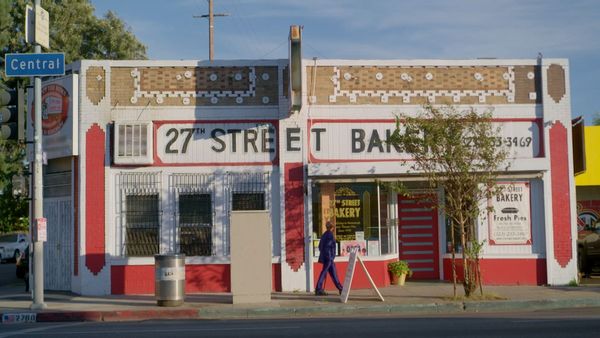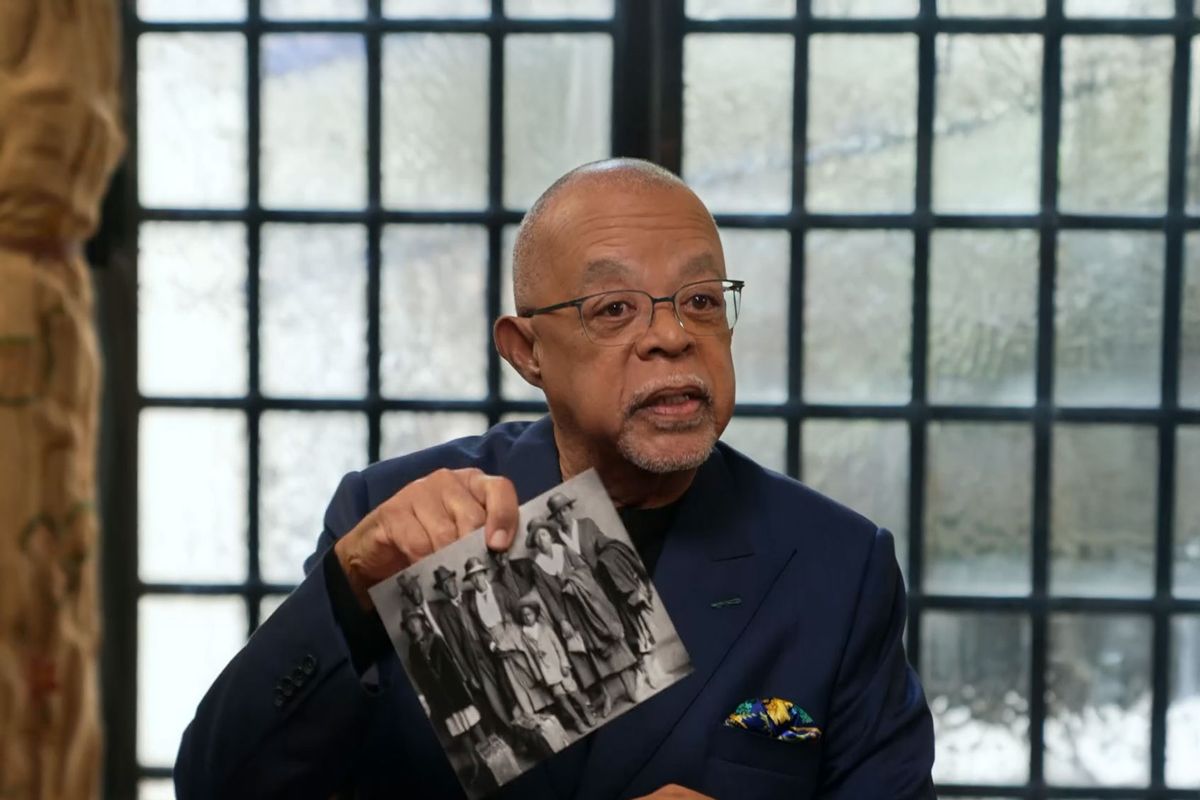If “Great Migrations: A People on the Move” had followed Dr. Henry Louis Gates Jr.'s original schedule, it would have aired on PBS years ago. However, Donald Trump’s election in 2016 prompted Gates to delay the project, along with “The Black Church” (which later aired in 2019), in order to fast-track his docuseries "Reconstruction: America After the Civil War," which also aired in 2019.
His reasoning for this reprioritizing made sense six years ago when Salon spoke to him about that project. From the perspective of 2025, it is prophetic. “Reconstruction” had to come first, he said, because of the period’s "allegorical implications for race relations and politics today.”
If you’re a believer that the universe tends to unfold as it should, then you’ll agree that “Great Migrations” is coming to us at precisely the right time.
Referencing Professor of Law at UCLA and Columbia Law School professor Kimberlé Crenshaw, Gates recognized all the gains won in the Civil Rights movement were now vulnerable because of the Supreme Court’s conservative makeup. And, he added, if the Court sided with the plaintiffs in Students for Fair Admission v. Harvard, “They're going to dismantle the same affirmative action that got me into Yale.”
Six years later, the fears Gates voiced in 2019 have come to pass, and with a speed he might not have predicted then. The Supreme Court’s 2023 ruling in favor of Students for Fair Admission, which was created by right-wing activist Edward Blum as part of his years-long crusade to erode civil rights protections and end diversity initiatives, ended affirmative action mandates at the university level.
The first two weeks of Trump’s second presidential term tossed accelerant on that act of arson, burning down anything related to diversity, equity and inclusion in the federal workforce, including federal contracting and spending.
For a time, the military even scrubbed training videos that included mentions of the Tuskegee Airmen and World War II Women’s Airforce Service Pilots (WASPs) from this curriculum to comply with the president’s. Bipartisan blowback led to the Air Force restoring those materials, demonstrating the haphazard nature of the orders’ execution and effects.
Regardless, if you’re a believer that the universe tends to unfold as it should, then you’ll agree that “Great Migrations” is coming to us at precisely the right time.
As the title suggests, this is a series about migrants whose movements across our land ended up being the most consequential in United States history. Gates and the historians he interviews use that term with an awareness of the politically charged connotations foisted on it by conservatives.
But Gates is a historian who has made chronicling the Black experience his life’s work, so here the migration waves he’s discussing, and celebrating, are those of Black Americans in the early 20th century leaving the Jim Crow South in pursuit of great economic opportunity in the North.
This is a story heavily excerpted and diminished in educational texts — if it is studied at all. Most Black families based in Northern cities know where their people originally came from — either intimately or through lore. Mine, for example, migrated northward from Mississippi in the wave the series covered in the first episode, “Exodus,” between 1910 and 1940.
As the title suggests, this is a series about migrants whose movements across our land ended up being the most consequential in United States history.
As he has before, Gates’ inquiry fills in the gaps between family stories and national history by reaching beyond the common explanations to examine the impact of these demographic movements.
Descendants of enslaved people were just fleeing violence or menial field labor to take advantage of the economic gain afforded by the Industrial Revolution. They were building a base of political might that would have lasting legislative consequences.
The second episode, “Streets Paved in Gold,” expands on the opening hour to look more closely at the Great Migration’s second way between 1940 and 1970. This coincides with the rise of Motown and the way its popularity organically integrates popular culture, but it also shores up one’s base of knowledge about the Civil Rights movement, extensively profiling A. Philip Randolph, the man who mentored Bayard Rustin.
A commodified version of Black History – which, even now, is better than the nothing the current administration seems to propose – presents an entire population's accomplishment through the lens of a few extraordinary individuals. Series like this one rectify that marvelously, showing the ways Black migrants waged the modern era’s most successful early struggles to secure homeownership rights and banishing, at least on the law books, racially discriminatory housing covenants.
We need your help to stay independent
But “Great Migrations” also distinctly shows what Rutgers University assistant professor Melissa Cooper describes as a pattern of "progress, barrier and success" that should resonate with anybody closely monitoring immigration debates right now.
History doesn’t repeat, historians like Gates and fellow PBS filmmaker Ken Burns often remind us, but it certainly echoes. When politicians talk about migrants today, they’re mainly and often disparagingly referring to Brown people – and certain Black ones whose migration the series delineates in the fourth episode, “Coming to America.”
Among the many highlights that make “Great Migrations” shine so brightly is to remind us that American Black people have been in that position before, inside our own country’s borders.
No place is that more pronounced than Gates’ citing “the Reverse Freedom Rides” concocted by the New Orleans chapter of the racist White Citizens Council. See if this sounds familiar: its members paid Greyhound to bus the poorest of the poor Black southerners to northern cities for free, promising they’d be received with jobs and housing accommodations.
History doesn’t repeat, historians like Gates and fellow PBS filmmaker Ken Burns often remind us, but it certainly echoes.
Those unsuspecting people were not only left stranded at their destination but frequently locked out of employment and opportunities by a discriminatory local community.
But there are many inspiring stories too, like that of Anna and Henry Laws, shared in “Streets Paved in Gold." In 1944, they built their dream home in what was then the all-white neighborhood of Watts, only to have their white neighbors attempt to drive them out.
Although a judge ordered the family to move, the family refused and were arrested, spending a week in jail before sustained pressure from protests mounted by sympathetic people in their community led to their release.
The Laws family stayed in their home, and a state of legal limbo, long enough to have the case against them reversed by the State of California after the Supreme Court ruled that racially restrictive covenants were unconstitutional in 1948.
 The Laws family outside of their old home. (McGee Media/PBS)This story yields one of the series' most moving images as Anna and Henry’s descendants stand outside the house their forebears built – still standing, although no longer owned by them.
The Laws family outside of their old home. (McGee Media/PBS)This story yields one of the series' most moving images as Anna and Henry’s descendants stand outside the house their forebears built – still standing, although no longer owned by them.
“What do you think made your ancestors fight back? . . . Where did their strength come from?” Gates asks them.
Denise Laws Jackson answers, “I think it’s just inside you. Sometimes you’re just born to be a fighter. You’re going to stand up for what you believe you have the opportunity and the right to have.”
The frequent reminder that Black history is American history gets a few nods during Black History Month but has yet to broadly sink in, as years’ worth of legislative efforts to erase honest history lessons keep showing us.
Want a daily wrap-up of all the news and commentary Salon has to offer? Subscribe to our morning newsletter, Crash Course.
“Great Migrations” is a vital addition to Gates’ chronicles, underscoring the tremendous value of ensuring these stories remain alive and accessible. Many memory doors these episodes open do not solely linger on the pain of racial animus, although the series doesn’t back away from it either. More impressive is its sense of triumph and appreciation at everything accomplished by these people of little means picking up their lives and taking them with them, as the Langston Hughes poem extols.
Its look at the reverse migration of Black families returning to the South in the third episode is at once an example of the ways changing population demographics can make concepts that seemed impossible not long ago — such as having a Black woman, Stacey Abrams, come within a single digit’s percentage of winning Georgia’s race for Governor.
The series also celebrates the business growth and innovations that grew out of Black communities establishing themselves in large American cities, particularly Berry Gordy’s industry and culture-shifting Motown model. When Motown’s music crossed over to appeal to white audiences, that contributed to the racial integration of mainstream culture that's here to stay. Culture, Gates argues, opens doors.
 Dr. Henry Louis Gates walking into 27th Street Bakery. (McGee Media/PBS)But at a time when white supremacy is mainstreamed into national politics, with the will of the White House fully in its service, “Great Migrations” calmly reminds us that America has been here before. Gates calls these migrations "expressions of hope, leaps of faith, acts of resistance.”
Dr. Henry Louis Gates walking into 27th Street Bakery. (McGee Media/PBS)But at a time when white supremacy is mainstreamed into national politics, with the will of the White House fully in its service, “Great Migrations” calmly reminds us that America has been here before. Gates calls these migrations "expressions of hope, leaps of faith, acts of resistance.”
It took millions of native-born American citizens to prove that, winning national action in the service of recognizing their rights. And it will take their children, and children’s children, to hold film and ensure those rights and that history aren’t scrubbed away.
"Great Migrations: A People on the Move" airs Tuesdays at 9 p.m. through Feb. 18 on PBS member stations and streams on the PBS app and its YouTube channel.



Shares